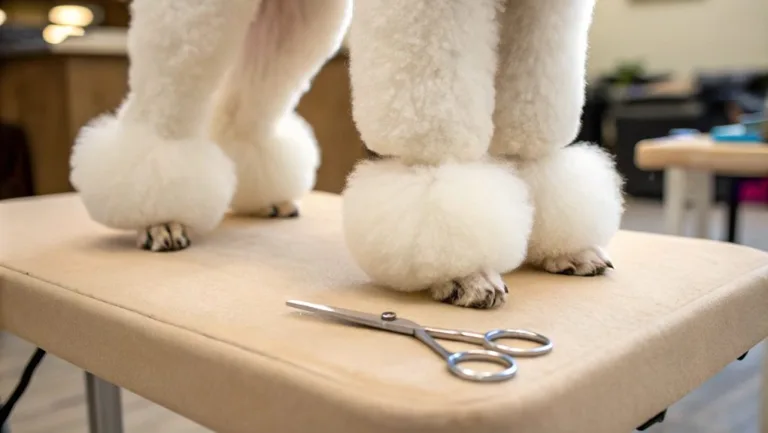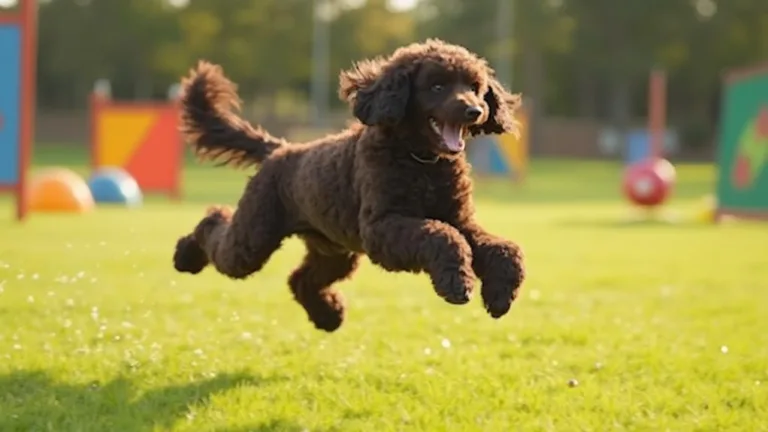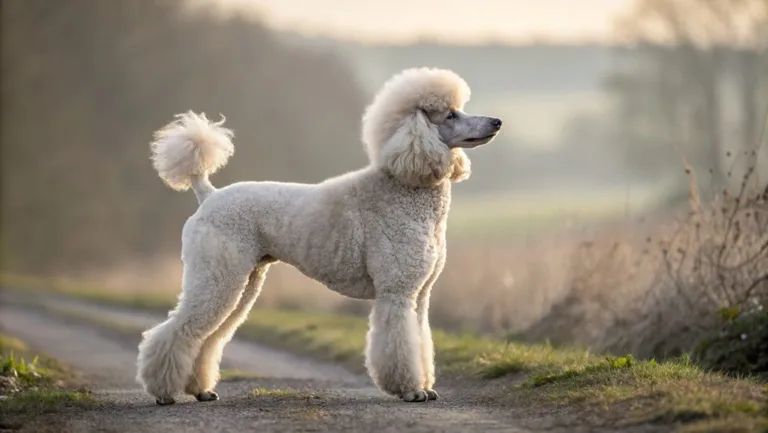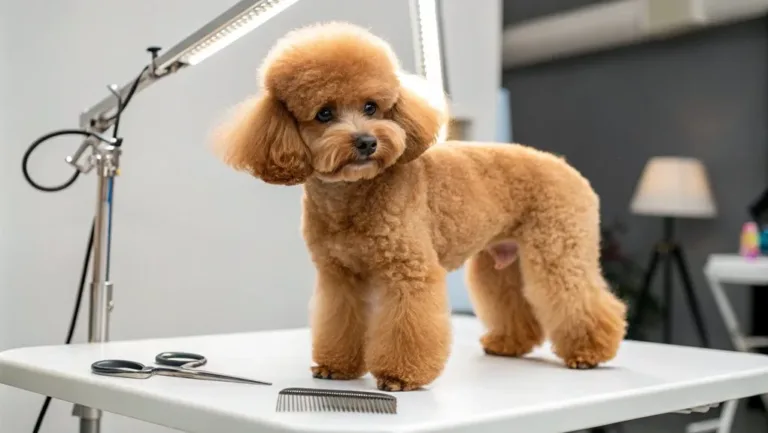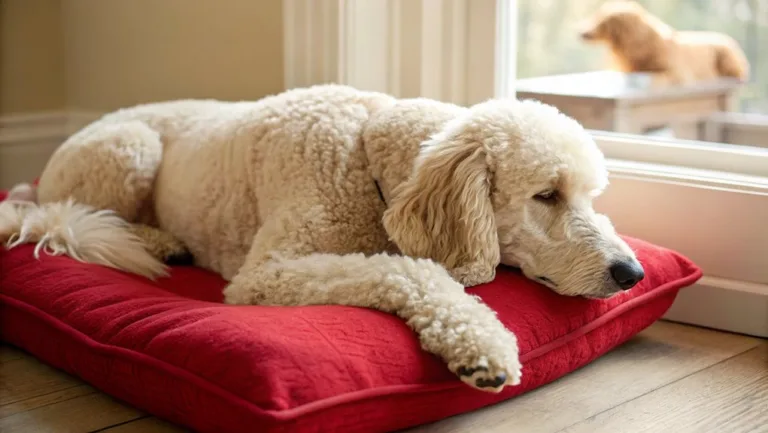Poodle Tail Curl: A Comprehensive Guide!
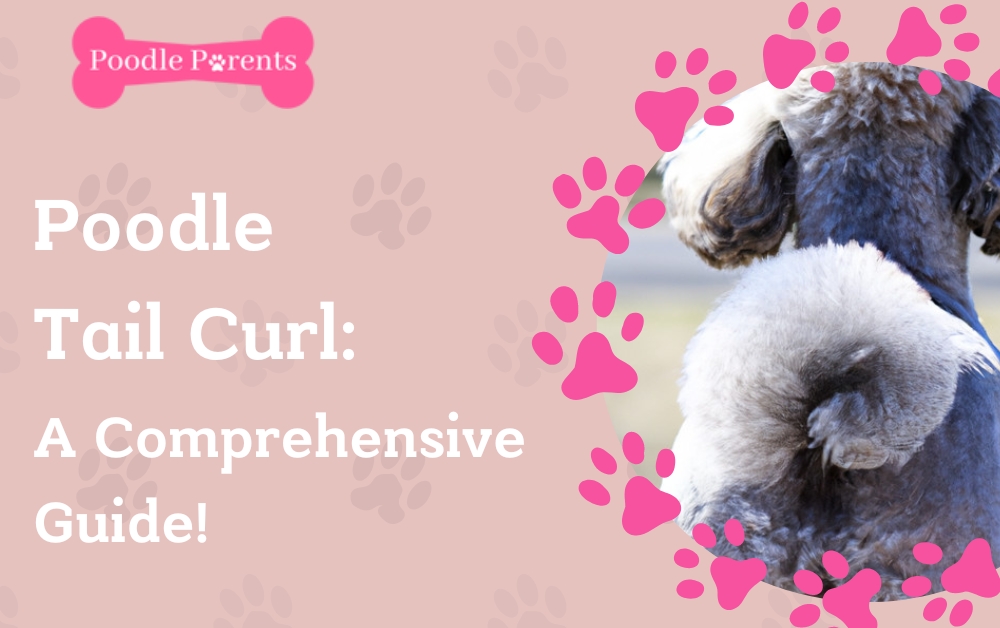
Poodles are a dog breed known for their distinctive, curly tail. This article provides an overview of poodle tail curls and explores the importance of properly understanding their curl to care for this unique feature.
In addition, it discusses various aspects, such as grooming and health considerations related to the poodle’s tail curl.
It examines how these factors affect the pet owner’s beloved companion’s overall look, feel, and comfort.
With this information, readers will be equipped with all they need to know about poodle tail curls to keep their pets looking and feeling great!
What Is A Poodle Tail Curl?
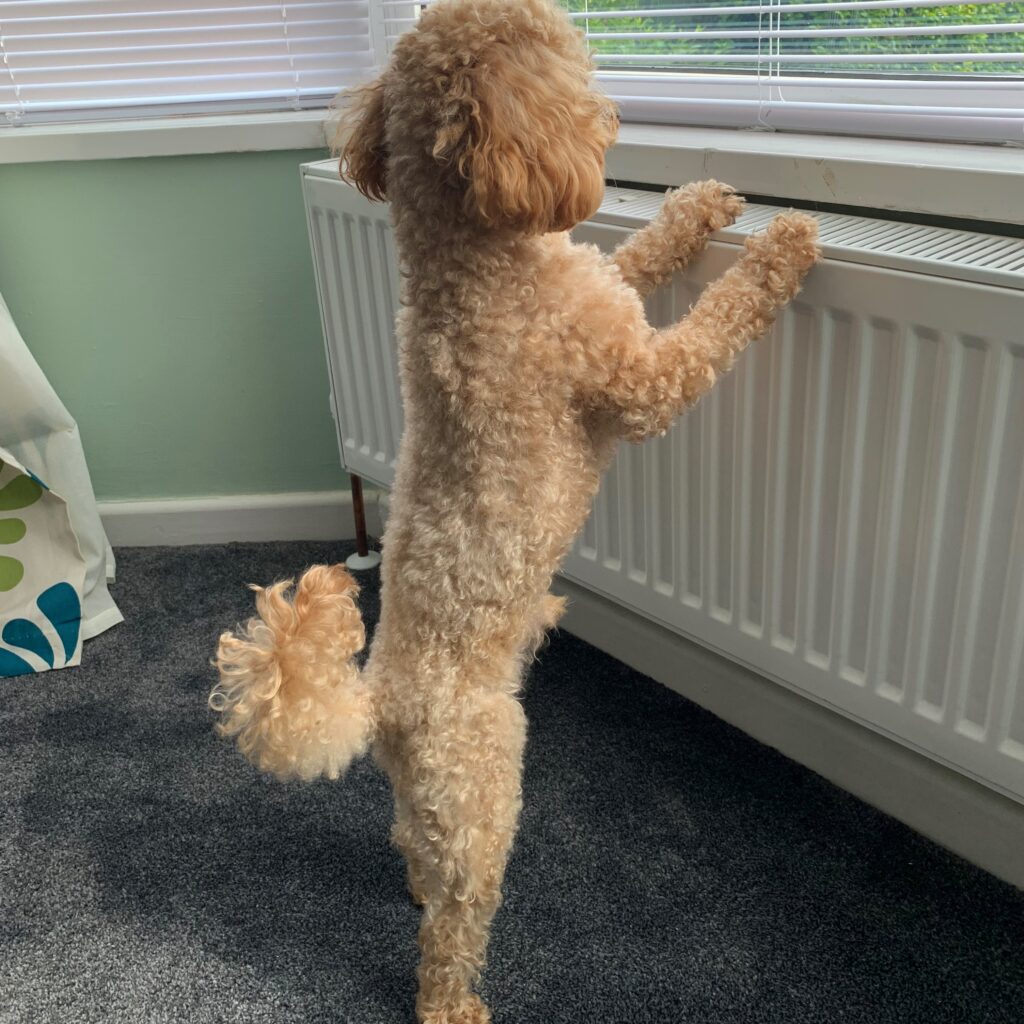
The Poodle tail curl is a distinct feature of the breed that can be seen in all sizes and varieties.
As part of show-dog standards, many poodles have their tails docked or cut short at birth.
This is because according to the (AKC) American Kennel Club’s “Poodle breed standard,” the ideal Poodle tail is defined as “Tail straight, set on high and carried up, docked of sufficient length.”
However, some countries leave poodles undocked with a curly tail, such as the UK. Contrary to the accepted “ideal” type for showing in dog shows, there are also straight tailed poodles that still conform to the breed standard.
This distinguishing characteristic helps define what is considered an authentic poodle by most kennel clubs worldwide.
The unique poodle tail curl adds to its aesthetic appeal and is believed to serve several practical purposes.
How Did Poodles Get Curled Tails?
Dogs’ tails are an extension of their spine, and it’s normal for some breeds to have naturally curled tails.
Hemivertebrae is a condition where the vertebrae of the spine are either fused or have a wedge shape, causing the tail to curl or have a corkscrew shape. This can be a painful medical condition for dogs but rare in poodles.
The tail curl is often hereditary, so puppies from parents with tail curls are likelier to have it themselves.
If you want a poodle with a straight tail, you should check both parents before picking a puppy or contact the breeder to discuss it further.
Even if both parents have straight tails, there is still a chance of getting a puppy with a curled tail, although it is less likely.
What Is A Poodle’s Curled Tail For?
The poodle’s natural tail curl serves a few purposes. Primarily, it is an adaptation to the breed that provides agility and maneuverability on land or water by acting as a rudder while they swim.
Some believe that the iconic look of any poodle, including the standard poodle with its curly tail, adds to their aesthetic appeal- like adding an exclamation point at the end of their sentence!
Naturally occurring tails are often seen on puppies, but these will generally curl over time due to gravity and movement- known as “gay tailed” poodles.
To maintain a permanent straight tail, owners have them docked when young – cutting off part of the dog’s tail for cosmetic reasons.

This practice has recently been scrutinized because docking does not always agree with animal welfare laws in certain countries.
What Do Poodle Puppy Tails Look Like?
When it comes to poodles, a few distinct types of tails can be seen in puppies. Generally, undocked tails are longer and curl up towards their backs like an upside-down question mark.

Poodles have puppies with natural tails that can be straight or curled. Docking a puppy’s tail is the process of removing a portion of the tail and is usually done when puppies are 1-2 weeks old.
Docking a tail is best done by a veterinarian professional to prevent infection and other issues. This tail docking will give your poodle a straight tail allowing it to be a show dog in the US.
However, some pet owners keep their tails uncut so they don’t miss out on any natural beauty the pup has inherited.
Whether you dock your pup’s tail or leave their poodle tail curl, it will always look stunning with its fluffy coat and unique, elegant look.
Can You Straighten A Poodles Tail Curl?
The poodle’s tail, which is often docked shortly after birth, is a unique feature of the breed. It should be curly and held upright when the dog is relaxed or alert; any other shape is considered a fault in conformation shows.
The curl at the end of the tail should not extend beyond 120 degrees from the horizontal plane of its body.
Straightening a poodle’s tail goes against nature and may cause discomfort for your pet if done improperly. Therefore, it’s best to leave their tails alone:
- Tail docking is an accepted practice among poodles as long as it’s carried out by a certified veterinarian.
- Dog owners who don’t like their pup’s natural look can opt for faux-straightening that don’t require surgery.
- A permanent option would involve surgically altering the tendon located just inside the skin on either side of the tip of the tail.
- Home remedies such as wrapping tape around the base of the tail are not recommended because they can cause pain and damage to delicate tissues.
Overall, there are various ways to adjust a poodle’s natural appearance, but remember that these alterations may negatively affect your pet’s health and well-being. In our opinion, not all the options would not be advised.
Therefore, it’s important to do thorough research before taking action regarding your pup’s physical features.
With this knowledge, you can make an informed decision about giving your pup an alternative look without compromising their comfort and safety.
Do Poodles Wag Their Tails A Lot?
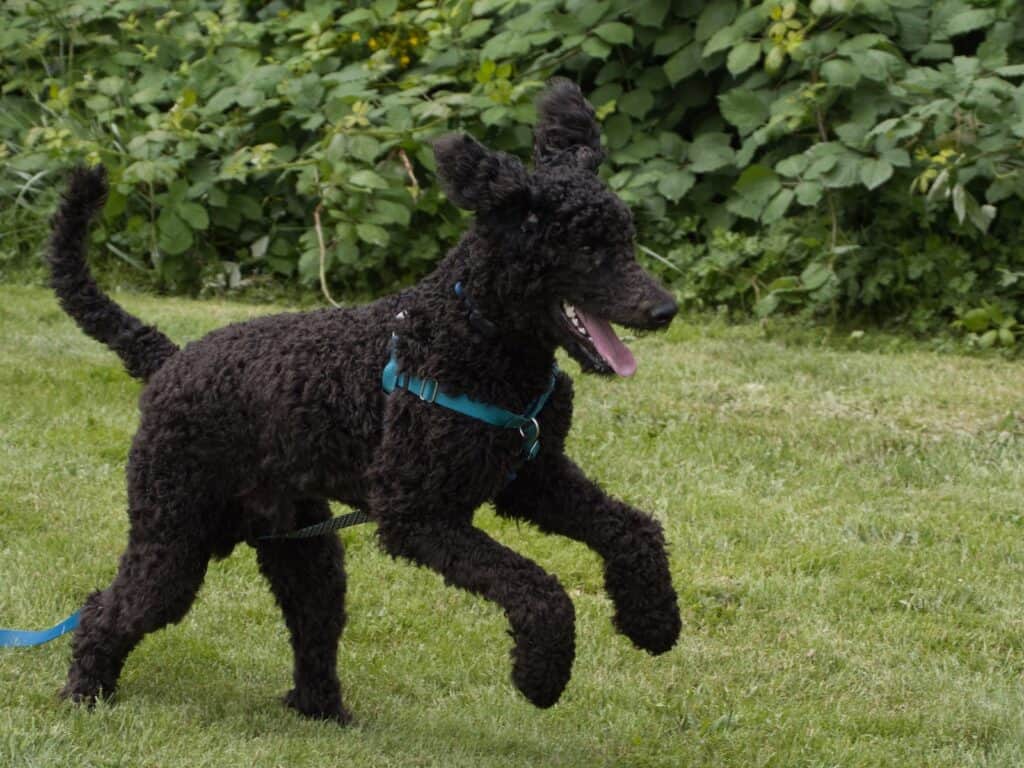
It is common knowledge that a wagging tail can indicate happiness in dogs. Poodles, being no different, display their joy and excitement through the movement of their tails!
Naturally curious creatures, these intelligent pooches often find ways to express themselves when they are content.
As such, it should come as no surprise that poodles tend to wag their tails frequently as they play and explore the world around them.
In addition, since they commonly enjoy spending time with humans and other animals, poodles use tail wags to communicate friendliness and affection.
The amount of tail-wagging done by any individual poodle may vary from dog to dog; however, this does not necessarily mean that those who do less wagging than others have lower energy or emotional investment in activities.
Some breeds show their enthusiasm more subtly than others—this could also explain why some owners might think that their pet isn’t as enthusiastic about things as its peers appear to be.
What Kind Of Tail Styles Can Poodles Get When Poodles Have A Groom?
Poodles have several different tail styles that can be achieved with a groom. A poodle’s tail may be left natural, or it can be trimmed and sculpted into various shapes to create the desired look.
Some of the most popular tail styles for poodles currently available:
| Tail Style | Description |
| Flag/Spear Tail | The fur is cut short at the base of the tail and then shaped into points on either side, resembling a flag or spear shape. This style is very attractive but requires regular upkeep. |
| Spiked Tail | The hair around the bottom half of the tail is shaved off to create an edgy spiked look. This look is often seen in show dogs and pet owners who want their pups to stand out from the crowd. |
| Curled Tail | Much like its name implies, this style involves curling up the tail to resemble a corkscrew curl or swirl pattern while keeping some length near the end of the tail. This style works best when paired with other creative styling cuts, such as scissored legs and ears. |
| Pom-Pom Tail | This fluffy little puffball is created by trimming all excess hair except for what covers the tip of the tail, creating a long tiny ball similar to a cotton candy explosion! Often used when grooming French Poodles and Bichon Frise breeds, this look will make your pup stand out from afar! |
The varying tails are designed to bring character and personality to any poodle’s appearance; whether you choose one of these common styles or come up with something new entirely, there are countless ways to express yourself through your furry friend’s looks!
With careful consideration and skillful grooming techniques, your pup will no doubt turn heads wherever they go!
Do Some Poodles Have Tails Docked?
The debate regarding poodles’ tails and whether they should be docked has been long-standing. As with many debates, there is no single answer.
Some people believe that the natural curl of a poodle’s tail adds to its beauty and uniqueness, while others opt for docking as it contributes to its overall aesthetic appeal.
Whether tails are docked on poodles depends on personal preference:
- Docking may provide an aesthetically pleasing look;
- It can also help prevent injury if the dog takes part in outdoor activities such as hunting;
- Tail docking can help reduce matting which could lead to bacteria buildup;
- Some owners feel that having a docked tail will make grooming easier.
- Docked tails are required for some dogs to enter shows.
Docking does come with its drawbacks too, pain caused by the process being one of them – so before making any decisions about dockings, pet owners must ensure they have researched all aspects thoroughly to make an informed decision that works best for both themselves and their furry companion.
Conclusion
Poodle tail curls are a special and important part of the breed. Pet owners should take care when considering their care and maintenance.
The tail curl is aesthetically pleasing and practical, as it helps the poodle with agility and maneuverability on land and in water.
It is also a hereditary trait, so pet owners must consider the genetics of the puppy’s parents when selecting a new pet.
Tail docking is a common practice for poodles, but it has come under scrutiny in some countries for its potential impact on animal welfare.
Pet owners must weigh the aesthetic benefits of a shorter tail that has been docked against potential risks or ethical concerns.
Ultimately, understanding the significance of a poodle’s tail curl is essential for pet owners who want to ensure their beloved companion’s well-being.
Pet owners can help their poodles look and feel their best with the right knowledge and care.
FAQ
Yes, Poodles can have curled tails. It’s actually one of the breed’s characteristics.
The curly tail is a natural feature of the Poodle breed and is determined by genetics.
Depending on the breed, a curled tail can be a genetic trait or a result of selective breeding for certain physical characteristics.


